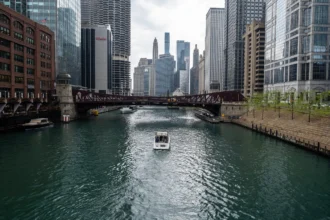Nestled in the heart of the Sonoran Desert, Tucson is one of the most culturally rich and naturally beautiful cities in the American Southwest. Located in southern Arizona and surrounded by majestic mountain ranges and endless saguaro cacti, Tucson combines old-world charm with modern flair.
With a blend of Native American, Spanish, Mexican, and frontier American influences, Tucson offers visitors and residents alike a diverse and vibrant experience. Whether you’re into hiking, art, history, or food, this desert gem has something for everyone.
A Brief History of Tucson
Ancient Roots and Indigenous Influence
Tucson’s history stretches back over 4,000 years, making it one of the oldest continually inhabited areas in North America. The Tohono O’odham Nation, one of the region’s original inhabitants, still plays a vital role in Tucson’s cultural identity today.
Spanish Missionaries and Mexican Heritage
Spanish missionaries, led by Father Eusebio Kino, arrived in the late 1600s. They established Mission San Xavier del Bac, which remains a stunning example of Spanish colonial architecture. Tucson became part of Mexico in 1821 before becoming a U.S. territory following the Gadsden Purchase in 1854.
The Old West and Military Influence
During the 19th century, Tucson served as a frontier town complete with stagecoaches, outlaws, and forts. Fort Lowell and the Arizona Rangers helped maintain order during the Wild West era, and remnants of this time can still be visited in museums and preserved neighborhoods.
Geography and Climate: A Desert Oasis
The Sonoran Desert Landscape
Tucson lies in the heart of the Sonoran Desert, known for its unique ecosystem that includes the giant saguaro cactus, palo verde trees, and colorful desert blooms. The surrounding Santa Catalina, Rincon, and Tucson Mountains offer stunning vistas and endless opportunities for outdoor adventure.
Tucson’s Unique Climate
Tucson boasts over 300 days of sunshine each year, making it a haven for snowbirds and outdoor enthusiasts. Summers are hot and dry, but winters are mild and ideal for hiking, biking, and sightseeing. The monsoon season (July to September) brings dramatic thunderstorms and cooling rains that transform the desert.
Arts and Culture: Tucson’s Vibrant Creative Scene
UNESCO City of Gastronomy
In 2015, Tucson became the first U.S. city designated a UNESCO City of Gastronomy. This honor celebrates the city’s deep culinary roots, including ancient farming techniques and indigenous ingredients. You’ll find everything from traditional Sonoran hot dogs to gourmet fusion dishes.
Art and Music
Tucson has a thriving arts community, with dozens of galleries, performance venues, and festivals. The Tucson Museum of Art, MOCA Tucson, and the Arizona Theatre Company showcase a wide range of artistic expression. Annual events like the Tucson Gem & Mineral Show and All Souls Procession draw international crowds.
Preserved Heritage and Architecture
Walk through Barrio Viejo, Tucson’s oldest neighborhood, to see 19th-century adobe homes and colorful murals. The city takes pride in its preservation efforts, blending old architecture with modern development in a way that honors its diverse past.
Outdoor Adventures and Natural Attractions
Saguaro National Park
Split into two districts flanking the city, Saguaro National Park is a must-see. It’s home to thousands of iconic saguaro cacti, some reaching up to 40 feet tall. Hike scenic trails like King Canyon, Douglas Spring, or the Cactus Forest Loop for unforgettable desert views.
Sabino Canyon and Mount Lemmon
Just northeast of the city lies Sabino Canyon, a desert oasis with hiking, swimming, and tram tours through stunning canyons. For a change in scenery, take the scenic Sky Island Scenic Byway up to Mount Lemmon, where pine forests and cool breezes offer a dramatic contrast to the desert floor.
Arizona-Sonora Desert Museum
More than just a museum, this outdoor destination is part zoo, part botanical garden, and part science center. It offers a hands-on introduction to desert ecology and wildlife and is one of the top-rated attractions in Tucson.
Education and Innovation
University of Arizona
Founded in 1885, the University of Arizona (UA) is the city’s academic heart and a major center for innovation, research, and culture. The campus is home to the Flandrau Science Center, UA Museum of Art, and the Biosphere 2 research facility just north of the city.
Tech and Aerospace
Tucson has a growing reputation in the tech and aerospace industries. Major employers include Raytheon, IBM, and Texas Instruments, with a growing startup scene bolstered by the university’s research initiatives.
Culinary Delights: A Foodie’s Paradise
Sonoran Cuisine
Tucson’s food scene is heavily influenced by Sonoran Mexican cuisine. Local staples include:
-
Carne asada tacos
-
Green chile burros
-
Tamales
-
Elotes (Mexican street corn)
Don’t miss the Sonoran hot dog, wrapped in bacon and topped with beans, onions, tomatoes, mustard, and jalapeño sauce.
Local Breweries and Coffee Roasters
Tucson has seen a rise in craft breweries and independent coffee roasters. Popular spots include:
-
Barrio Brewing Co.
-
Tucson Hop Shop
-
Exo Roast Co.
The city’s laid-back vibe pairs perfectly with a morning coffee or an evening pint under the desert stars.
Events and Festivals: Tucson’s Year-Round Celebrations
Tucson Gem & Mineral Show
Held every February, this is the largest event of its kind in the world. Vendors, collectors, and enthusiasts come from every continent to explore rare stones, fossils, and jewelry.
All Souls Procession
This Day of the Dead celebration brings together tens of thousands of people in a public expression of remembrance. The procession features costumes, floats, music, and a ceremonial burning of a large urn containing messages to departed loved ones.
Fourth Avenue Street Fair
Held twice a year, this downtown festival features local artists, food vendors, and live entertainment, turning the entire street into a walkable art market.
Living in Tucson: Cost of Living and Lifestyle
Affordable Desert Living
Compared to other major cities in the Southwest, Tucson offers a lower cost of living. Housing remains relatively affordable, and residents enjoy a high quality of life thanks to the city’s amenities, outdoor access, and community spirit.
A Laid-back, Inclusive Community
Tucson is known for its welcoming and diverse community. Whether you’re a retiree, student, artist, or entrepreneur, you’ll find a niche in this relaxed and progressive city.
Getting Around Tucson
Transportation and Accessibility
Tucson is served by the Tucson International Airport and has a growing network of bike paths, buses, and the Sun Link Streetcar, which connects downtown with the University of Arizona and key neighborhoods.
Walkable and Bike-Friendly
Tucson is ranked as one of the most bike-friendly cities in the U.S., with hundreds of miles of bike lanes and the Loop, a 130-mile multi-use path perfect for cyclists and runners.
Conclusion: Why Tucson Should Be on Your Radar
Tucson, Arizona, is much more than just a desert city — it’s a place where history meets innovation, where nature coexists with culture, and where every sunset paints a masterpiece across the sky. Whether you’re visiting or planning to stay, Tucson offers an experience that’s rich in heritage, full of flavor, and deeply connected to the land.
From its towering saguaros to its vibrant art scene and friendly communities, Tucson is a true gem of the Southwest.





